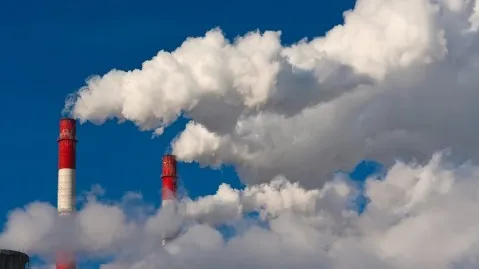
VOX POP: Could ammonia co-firing be the solution to decarbonise coal-fired plants?
Experts have mixed views of the effectiveness of the nascent technology in decarbonisation.
Several efforts are being made to reduce carbon emissions in the power sector, one of which is ammonia co-firing with coal. Whilst the solution is still developing, there had been concerns over its effectiveness in supporting decarbonisation drives, as well as challenges over supply.
Asian Power spoke with an industry analyst and leader to shed light on the direction of co-firing ammonia with coal in power plants.
Attaurrahman Ojindaram Saibasan
Senior Power Analyst
GlobalData
Co-firing ammonia in coal power plants is not a viable strategy for decarbonisation. Currently, the technology is at a nascent stage and unproven on a large scale. In 2021, Japan’s JERA implemented a demonstration project to establish technology for large-scale ammonia fuel co-firing at the Hekinan Thermal Power Station. The ammonia-coal co-firing plant uses 20% ammonia and is set to use 50% at a later stage. This may be seen as an attempt to increase the life-cycle of coal-fired plants stunting the growth of renewables such as solar PV and wind which are more favourable towards achieving decarbonisation.
In December 2022, Mitsubishi Heavy Industries signed a memorandum of understanding with a Chilean independent power producer to conduct research on the possibility of turning the power plant located at Huasco, Atacama Region in Chile into an ammonia-coal co-firing plant. The 758MW power plant has five units.
With regard to decarbonisation, the benefits are minimal. The usage of 20% ammonia still emits five times more greenhouse gas than the benchmark set by the International Energy Agency for the Net Zero 2030 scenario. It also raises the question as to which ammonia is used whether it is grey, blue, or green. Although green ammonia is preferred, it would be better used in other applications and would prove costly to be used in a coal-firing power plant.
The key benefit of co-firing ammonia in coal-powered plants achieved at a large scale would be the increase in demand for the product itself. The key challenge is the cost-effectiveness of the plant. The usage of ammonia would double the fuel costs even with grey ammonia, the cheapest form of ammonia. The usage of blue or green ammonia would make renewables a cheaper option thus nullifying the need for an ammonia co-fired plant.
Converting a coal plant to an ammonia co-firing coal plant would require massive investments in retrofitting which would not yield good returns if there were stricter regulations post 2030 to phase out coal-power plants.
Frank Thiel
Managing Director, Quezon Power (Philippines) Limited Co.
General Manager, San Buenaventura Power Ltd. Co.
There are many ways to approach decarbonisation and ammonia co-firing is just one of them. You also have biomass co-firing. The other thing coal-fired plants can consider the same thing as a combined cycle is to put a carbon capture facility on the back end, and then either take the carbon that is captured and put it into the ground or use it for other purposes.
Right now, we think ammonia co-firing has a lot of merits and we are evaluating all of that. All those things have pros and cons, there is cost associated. We are trying to find something that allows us to bring down the level of greenhouse gas emissions, at the same time allow the plant to continue operating.
The number one benefit of ammonia co-firing is the reduction of greenhouse gas emissions. We are in primarily for that. Our company has taken on a pledge to try and reduce greenhouse gas emissions all around and we have a target to reduce a certain percentage by 2030. We are trying to follow that directive and trying to bring down greenhouse gas emissions.
There are many challenges to ammonia co-firing. The first challenge is supply. There is a limited amount of ammonia. Ammonia is primarily a fertiliser. When people say ammonia, they don't think of ammonia as a fuel, they think of ammonia as a fertiliser. So, you find yourself competing with entities that are using ammonia.
Another challenge is the delivery of ammonia. How am I going to bring ammonia to the Philippines in the quantities that I need in order to burn it in the facility? Once it's here, I have to make sure that it's done properly and safely. Ammonia is toxic, and it can be corrosive as well, so we have to be very careful. Ammonia as a fuel is something new, so we're learning as we go on. But we want to make sure that it is done properly and safely. The last thing we want is to create a problem, so we want to make sure that everything is done in accordance with all the latest regulations.








![Cross Domain [Manu + SBR + ABF + ABR + FMCG + HBR + ]](https://cmg-qa.s3.ap-southeast-1.amazonaws.com/s3fs-public/styles/exclusive_featured_article/public/2025-01/earth-3537401_1920_4.jpg.webp?itok=WaRpTJwE)
![Cross Domain [SBR + ABR]](https://cmg-qa.s3.ap-southeast-1.amazonaws.com/s3fs-public/styles/exclusive_featured_article/public/2025-01/pexels-jahoo-867092-2_1.jpg.webp?itok=o7MUL1oO)









 Advertise
Advertise


